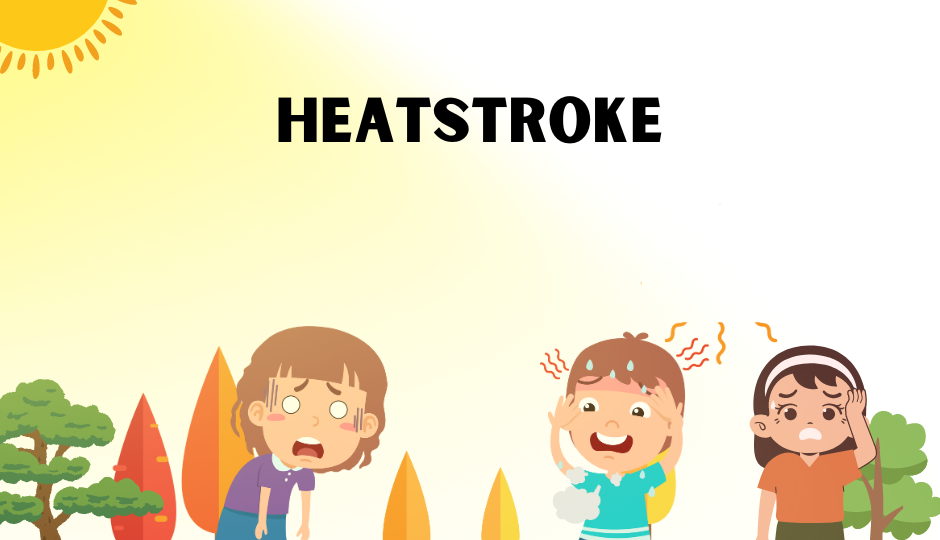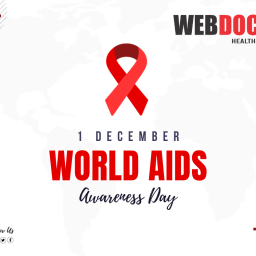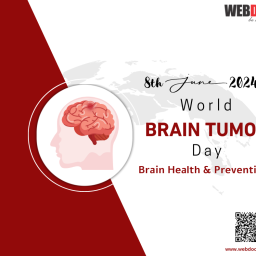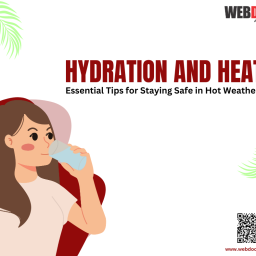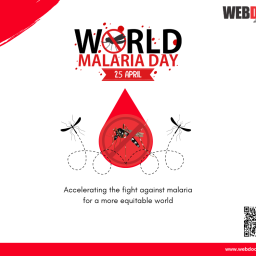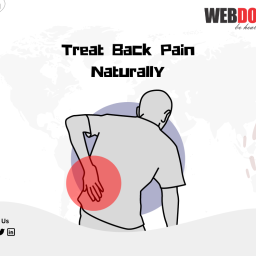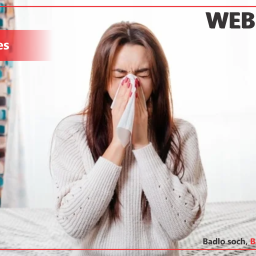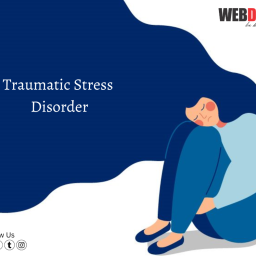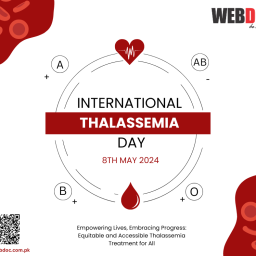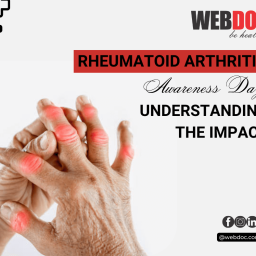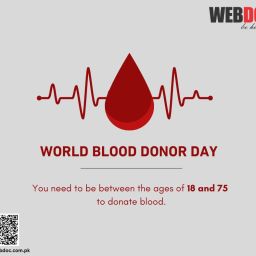Understanding, Prevention, and Treatment
Introduction
Heatstroke is a severe and potentially life-threatening condition characterized by an elevated body temperature, typically above 104°F (40°C), caused by prolonged exposure to high temperatures or strenuous physical activity in hot environments. Unlike heat exhaustion, which is a milder form of heat-related illness, heatstroke requires immediate medical attention to prevent serious complications or death. This article delves into the causes, symptoms, prevention strategies, and treatment options for heatstroke, providing a comprehensive understanding of this critical health issue.
Causes of Heatstroke
Heatstroke occurs when the body’s temperature regulation system becomes overwhelmed by excessive heat. There are two primary types of heatstroke: exertional and non-exertional (classic) heatstroke.
Exertional Heatstroke (EHS):
This type typically affects individuals who engage in intense physical activity in hot and humid conditions. Athletes, laborers, and military personnel are particularly at risk. The body’s heat production during vigorous exercise can exceed its ability to dissipate heat, leading to a rapid increase in core temperature.
Non-Exertional (Classic) Heatstroke:
This form of heatstroke generally affects vulnerable populations such as the elderly, infants, and individuals with chronic illnesses. It occurs during prolonged exposure to high temperatures, especially in environments lacking adequate cooling mechanisms. Medications and health conditions that impair the body’s ability to regulate temperature can exacerbate the risk.
Symptoms of Heatstroke
Recognizing the symptoms of heatstroke is crucial for timely intervention. The condition can escalate rapidly, so early identification is essential. Key symptoms include:
High Body Temperature:
A core body temperature above 104°F (40°C) is a hallmark of heatstroke.
Altered Mental State or Behavior:
Confusion, agitation, slurred speech, irritability, delirium, seizures, and even coma may occur.
Nausea and Vomiting:
The gastrointestinal system can be affected, leading to nausea and vomiting.
Flushed Skin:
The skin may become red and hot due to increased blood flow.
Rapid Breathing and Heart Rate:
The body’s efforts to cool down can result in tachypnea (rapid breathing) and tachycardia (rapid heart rate).
Headache:
Severe headaches are common during heatstroke.
Lack of Sweating:
In classic heatstroke, the skin may be dry due to dehydration, whereas in exertional heatstroke, the skin is often moist.
Risk Factors
Several factors increase the risk of developing heatstroke:
Age:
The very young and the elderly are more susceptible due to their bodies’ less efficient temperature regulation mechanisms.
Health Conditions:
Chronic illnesses such as cardiovascular disease, respiratory conditions, obesity, and diabetes can increase the risk.
Medications
: Certain medications, including diuretics, antihistamines, beta-blockers, and antipsychotics, can impair the body’s ability to regulate temperature.
Environmental Conditions:
High ambient temperatures, humidity, and lack of access to air conditioning or adequate ventilation heighten the risk.
Physical Activity:
Intense physical activity, especially in hot weather, can precipitate exertional heatstroke.
Hydration Status:
Dehydration impairs the body’s ability to sweat and cool down.
Prevention Strategies
Preventing heatstroke involves a combination of personal and environmental strategies:
Stay Hydrated:
Drinking plenty of fluids is crucial, especially water and electrolyte-rich beverages. Avoid alcohol and caffeine, which can contribute to dehydration.
Dress Appropriately:
Wear lightweight, loose-fitting, and light-colored clothing to facilitate heat dissipation.
Limit Outdoor Activities:
During peak heat hours (10 a.m. to 4 p.m.), minimize outdoor activities. Schedule exercise or labor during cooler parts of the day.
Use Fans and Air Conditioning:
Utilize fans and air conditioning to cool indoor environments. If air conditioning is unavailable, spend time in air-conditioned public spaces.
Take Cool Showers or Baths:
Regularly cooling down with showers or baths can help regulate body temperature.
Acclimatize:
Gradually increase exposure to high temperatures to allow the body to adapt. This is particularly important for athletes and workers in hot environments.
Monitor Vulnerable Individuals:
Pay close attention to infants, the elderly, and those with chronic illnesses. Ensure they stay cool and hydrated.
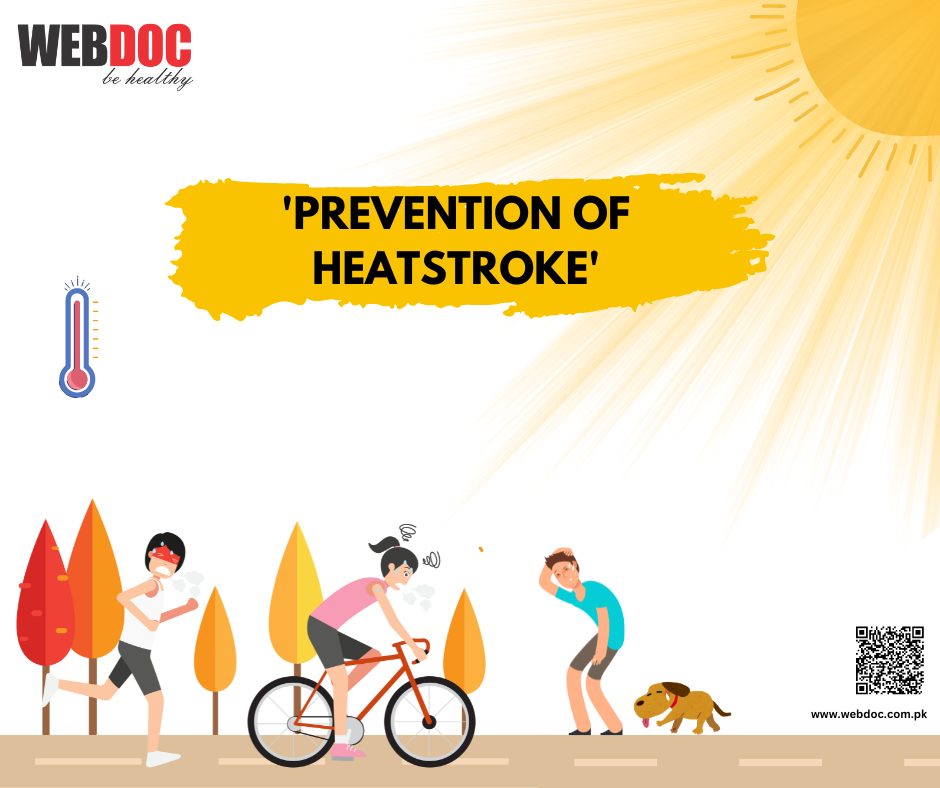
First Aid for Heatstroke
Immediate action is essential when heatstroke is suspected. First aid measures include:
Call Emergency Services:
Heatstroke is a medical emergency. Call for professional medical assistance immediately.
Move to a Cooler Environment
: Transfer the affected individual to a shaded or air-conditioned area.
Cool the Body:
Remove excess clothing and use cooling methods such as cold water immersion, ice packs, or wet towels on the body. Focus on cooling the neck, armpits, and groin.
Hydrate:
If the person is conscious and able to swallow, provide cool water or oral rehydration solutions. Avoid caffeinated or alcoholic beverages.
Monitor Vital Signs:
Keep track of the person’s breathing, pulse, and responsiveness. Be prepared to perform CPR if necessary.
Medical Treatment
Professional medical treatment for heatstroke involves advanced cooling techniques and supportive care:
Aggressive Cooling:
Rapid cooling is paramount. Methods include ice water immersion, evaporative cooling (spraying the body with water and fanning), and cooling blankets.
Intravenous Fluids:
IV fluids are administered to rehydrate and restore electrolyte balance.
Medications:
In some cases, medications may be used to control shivering, which can impede the cooling process.
Monitoring and Supportive Care:
Continuous monitoring of vital signs, urine output, and blood tests to assess organ function and electrolyte levels is essential. Supportive care may include oxygen therapy and management of complications such as renal failure, rhabdomyolysis, or electrolyte imbalances.
Complications
Heatstroke can lead to severe complications if not promptly and effectively treated:
Organ Damage:
Prolonged hyperthermia can cause damage to vital organs, including the brain, heart, kidneys, and liver.
Rhabdomyolysis:
Muscle breakdown can result in the release of muscle fibers into the bloodstream, potentially leading to kidney damage.
Electrolyte Imbalances:
Heatstroke can disrupt the balance of electrolytes, leading to complications such as seizures or cardiac arrhythmias.
Coma and Death:
Without immediate and appropriate intervention, heatstroke can be fatal.
Special Considerations for Vulnerable Populations
Certain populations require special attention to prevent and manage heatstroke:
Elderly Individuals:
Aging reduces the efficiency of the body’s cooling mechanisms. Ensuring access to cool environments, monitoring hydration, and adjusting medications that affect thermoregulation are critical steps.
Infants and Children:
Young children are particularly susceptible due to their higher metabolic rates and limited ability to regulate body temperature. Keeping them hydrated, appropriately dressed, and in cool environments is essential.
Athletes:
Athletes should acclimatize to heat gradually, maintain proper hydration, and take breaks during intense activities. Coaches and trainers should be vigilant for signs of heat-related illnesses.
Workers in Hot Environments:
Occupational safety measures, including scheduled breaks, hydration protocols, and access to cooling areas, are vital for preventing heatstroke among workers in hot settings.
Global Impact and Climate Change
The incidence of heatstroke is expected to rise globally due to climate change, which is increasing the frequency and intensity of heatwaves. Urbanization, with its associated heat island effect, further exacerbates the risk in cities. Public health strategies must adapt to these changing conditions by enhancing community awareness, improving infrastructure for cooling, and developing emergency response plans for heatwaves.
Conclusion
Heatstroke is a critical health issue that necessitates immediate attention and intervention. Understanding its causes, recognizing its symptoms, and implementing effective prevention and treatment strategies can save lives. As climate change continues to pose challenges, proactive measures at both individual and community levels are essential to mitigate the risk of heatstroke and safeguard public health. Through education, awareness, and preparedness, the devastating impact of heatstroke can be significantly reduced.


